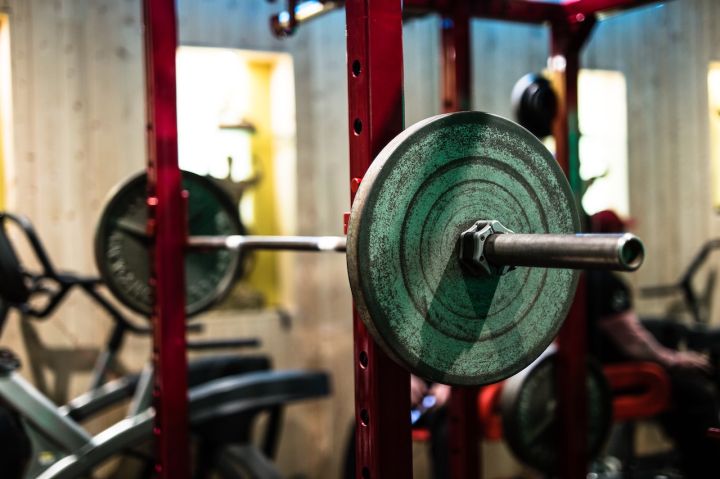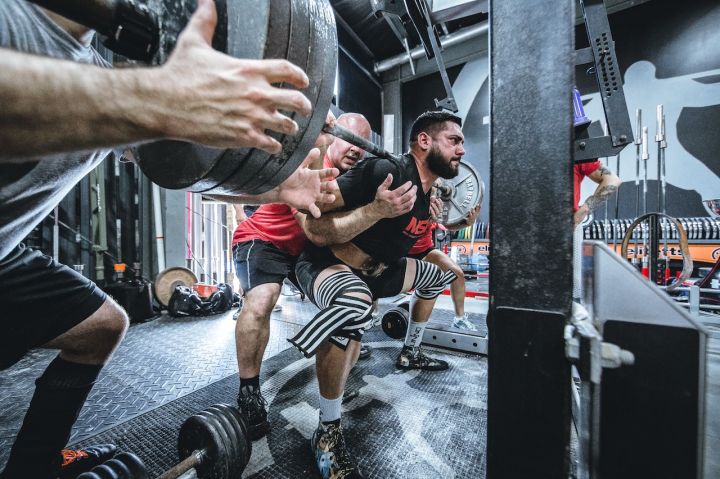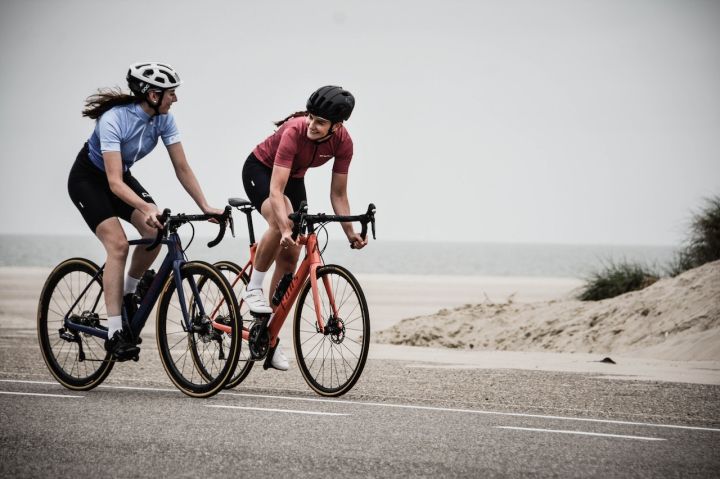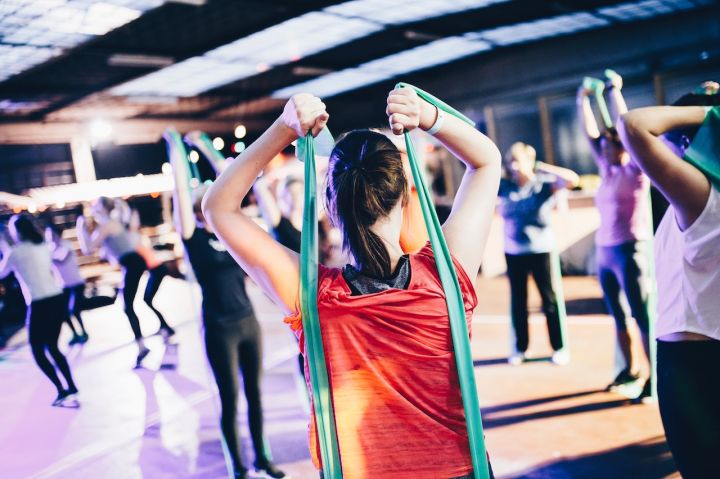Can you imagine the horrible mistakes that can happen in the gym when you might think of flying off a treadmill, or dropping a weight on your foot, or being crushed by a barbell.

While you may not mess up in the gym, there is a good chance you will make a few mistakes when using complex equipment. And one of the most tangled is the rope or similar equipment for the gantry.
Why is rope-based equipment so difficult?

Rope equipment such as gantries is a very complex and versatile piece of fitness equipment. There are many different fixing positions and a variety of handles to enrich its functionality, but this also creates a lot of confusion (especially for beginners).
In addition, these machines make it easy to isolate individual muscle groups for training, but this also means that it is easier to use to add too much weight. If the weight is too heavy, it can affect the detail of your movements.
There's no need to worry, since rope-based equipment is a perfect multifunctional piece of equipment that can be used for a full-body workout. So, today we're here to help with these problems as we summarise the six most common wrong exercises, as well as the correct training movements.
How to choose the right weight

Choosing the right weight depends on your fitness goals. Before you start, take a minute to think about the results you want.
If you want to build and maintain muscle, then pick a weight that is more challenging when you can complete 15 to 18 reps in a set. If you want to build muscle, then the weight will feel more difficult when completing a set of 8 to 12 reps, then the weight is right.
The most important rule to remember is that you should never sacrifice movement technique for a bigger weight as it puts you at risk of injury and can actually stop you from getting stronger. If you use your movement technique correctly, your muscles will actually get a workout and there is nothing worse than getting injured.
Now that you're ready with the right weights for you, let's take a look at the most common mistakes and how to adjust them. Avoid injury and get fitter faster.
Downward rope flybys (chest pinch)

Common errors: Incorrect set-up
Common setting errors: Handle position, positioned too far forward, etc. This can lead to substandard movements.
How to adjust
Grab the handles and take a step backwards. Pull the handles down to your chest and step forward. Stand with your feet staggered and press the handles down so that your wrists are in a straight line with your shoulders.
Common mistake: Leaning too far forward
The downward rope fly does not refer to the position of your body, but the angle at which you move the weight. In this movement, people tend to lean forward or lunge too far forward, both of which are not normal.
To start in the right way, grab the handles and pull the weight. With the front leg as the "Angle indicator", stand crossed, elbows slightly bent and chest up.
Squeeze your shoulder blades together and stretch your arms out to the sides at chest level. Keep your shoulders tight so your arms don't flop back.
Using your chest, pull the handles back to the starting position, holding them at the same angle as your front legs. Continue to repeat.
Seated rope row

Common mistake: Poor posture
Hunching or shrugging your shoulders puts your back at risk of injury. Leaning back too far is also to be avoided. If you feel discomfort in your abs or lower back, this is a sign that you need to reduce your weight.
Start by sitting in front of the machine with your feet on the platform and your knees slightly bent. Grab the handles and place your arms straight out in front of your body. Sit up straight and keep your core stable.
Make sure your spine is straight, your shoulders are back and your chest is up. Bend your elbows and pull the handles towards your chest, then concentrate on squeezing your shoulder blades.
Hold for 1 rep, then slowly return to the starting position, keeping your body stable. Repeat.
Biceps rope curl

Common mistake: Lack of control
Movement standard is everything, it ensures you are targeting the correct muscles and helps prevent injury. So if you find you can't control extending and flexing your arms, this is a big problem.
When you pull the handles towards your chest, don't let your elbows go up to shoulder height. If you can't control your body, then lighten the weight and focus on movement control.
Common mistake: Using borrowed strength
Another problem is that you do too much borrowing, generating momentum from your legs, hips, or torso. If you see (this is what the mirror is for) or feel yourself leaning forward or back, then lose some weight.
For lighter weights, grab the handles with your lower palms and start standing in front of the equipment with your feet together and knees slightly bent. Keep your body upright. Bend your elbows and pull the handles upwards towards your chest, then resist the weight as you slowly lower it back to the starting position.
It is important to keep the elbows close to the body during this exercise. One trick is to tuck a towel under each elbow as a reminder. If the towel falls out, you'll know you're doing it wrong.
Triceps rope stretch

Common mistake: Bending over
Don't do this. It's not advisable to bend over to get "Leverage" On the weight. Your body should be kept high, your core stable and you should move slowly and with control to really reap all the benefits.
Grab the rope and stand in front of the equipment with your arms bent at 90 degrees, elbows close to your sides, feet together and knees slightly bent.
Keep your body core stable, elbows still and arms extended to the sides of your body, then return to the starting position and repeat. You can also use the towel technique described above in this exercise.
Rope high pull down

Common mistake: Pull down behind the neck
One of the most common mistakes is pulling the pull down bar to the back of the neck. This can cause many shoulder and neck problems and should not be attempted lightly.
Face the apparatus and sit up. Grasp the bar, keep your core stable and pull the bar down to your chest, leaning back slightly so you can pull it over your face without hitting your chin.
Imagine pulling your shoulder blades downwards as if you were moving them towards the back pocket of your trousers. Slowly rise up in a controlled manner by resisting the weight and return to the starting position. Repeat.
Standing rotation

Common mistake: Too much movement
When it comes to torso rotation, you should not move anything except your torso. You should not bend forward, lean or generate momentum from anywhere else.
If you feel like the weight is throwing you off balance or you need to use your whole body to get the power to finish, then lighten the weight.
To complete the movement perfectly, concentrate on keeping your body upright and only use your core to rotate at the waist. Grasp the handles with both hands and walk to the side of the equipment with your arms straight out in front of your chest.
Twist at the waist and pull the weight to one side. Your lower body should not move. Return to the starting position and repeat on the other side.

With all the handles and full rope equipment, you don't have to be overly confused. Remember the key point: Slow down.
Setting the optimal weight will ensure that you can maintain the correct movement and get the most out of your workout. A common requirement is: Straighten your spine and lift your chest, although this will also depend on the specific movement.
Before you grab the handles and start the movement, check your starting position and posture. Don't forget to make sure you are breathing well.
Move with intention and control during each repetition. If you can't maintain good posture, then lighten the weight, take a good look at our suggestions and start again.
If none of these methods work, ask a professional trainer what to do.
We hope these suggestions have helped you to use the rope equipment better. With the right movements it can be fun as it is recognised as an integrated piece of equipment.





